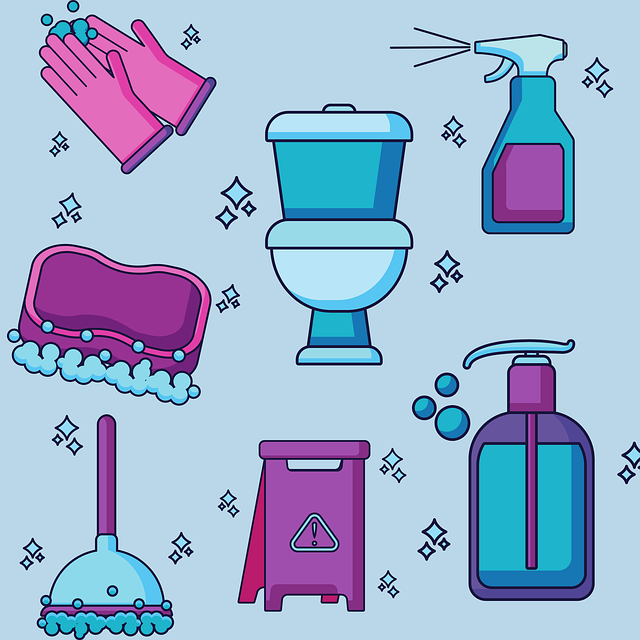Understanding different tile types (ceramic, porcelain, stone) and their cleaning needs is crucial for effective maintenance. Regular cleaning routines with natural or chemical solutions prevent bacteria, mold, and stains. Deep cleaning sessions with specialized tools maintain tile appearance. Restoring grout enhances durability and aesthetics. Using proper techniques and protection prevents future damage. Research professional services based on experience, reviews, insurance, and tailored solutions for optimal tile care.
Professional tile cleaning is a vital aspect of maintaining any space, from homes to commercial properties. With various tile types—porcelain, ceramic, natural stone—come unique cleaning challenges. This comprehensive guide explores the ins and outs of tile care, from understanding different tile needs to choosing effective cleaning solutions and professional services. Learn how regular maintenance, proper techniques, and the right products can keep your tiles looking their best while preventing costly repairs.
Understanding Tile Types and Their Unique Cleaning Needs
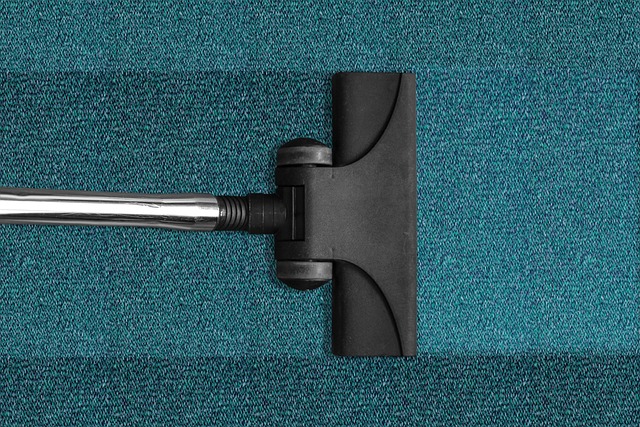
When it comes to tile cleaning, understanding the diverse range of tile types is crucial for achieving optimal results. Different tiles, from ceramic to porcelain and natural stone, possess distinct characteristics that influence their cleanliness and maintenance requirements. Each type has a unique finish, porosity, and composition, which can affect how dirt and stains adhere and how they respond to various cleaning methods. For instance, porous tiles like certain types of ceramic may require more frequent vacuuming or steam cleaning to prevent moisture absorption and the growth of mold or mildew.
On the other hand, non-porous materials like porcelain or some forms of stone are generally easier to maintain as they repel liquids and stains more effectively. These tiles can often be cleaned with standard household detergents and a quick scrub. Natural stones, while aesthetically appealing, may need specialized care due to their inherent variations in texture and composition, making them prone to etching or staining if not properly treated. Professional tile cleaners are equipped with the knowledge and tools to address these unique cleaning challenges, ensuring that each tile type receives the attention it deserves for a sparkling and lasting finish.
The Importance of Regular Tile Maintenance

Regular tile maintenance is an often-overlooked aspect of home or business ownership, but it’s a crucial step in ensuring your tiles stay looking their best and last for years to come. Tile cleaning isn’t just about aesthetics; it also plays a vital role in maintaining the overall hygiene and value of your space. Regular cleaning helps remove dirt, stains, and grime that can accumulate between grout lines, promoting a healthier environment by reducing the growth of bacteria and mould.
Moreover, proper tile maintenance prevents more extensive and costly repairs down the line. Over time, lack of care can lead to discoloured tiles, damaged grout, and even warped surfaces. By incorporating simple yet effective tile cleaning routines into your regular housekeeping, you’ll save money on professional cleaning services and enjoy a refreshed, sparkling space that enhances your daily experience.
Effective Tile Cleaning Solutions: Natural vs Chemical
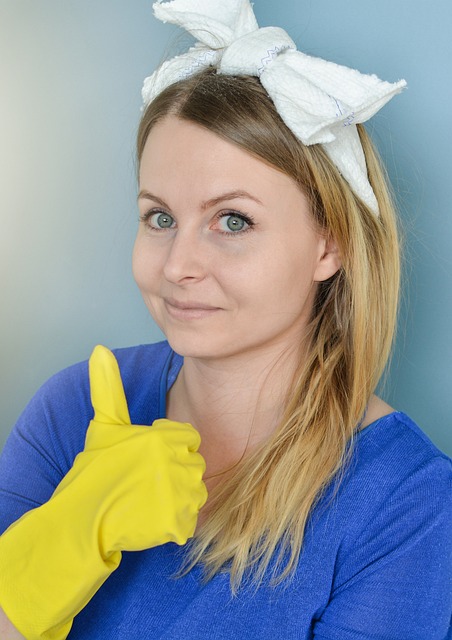
When it comes to tile cleaning solutions, there are two primary approaches: natural and chemical. Natural solutions, such as vinegar or baking soda, have gained popularity due to their eco-friendly nature and minimal environmental impact. These options are often preferred for their gentle yet effective cleaning properties, especially in homes with children or pets. Vinegar, for instance, is known for its ability to dissolve grease and grime, while baking soda acts as a mild abrasive to scrub away tough stains.
On the other hand, chemical tile cleaners offer powerful performance, particularly for heavily soiled or aged tiles. These products contain strong detergents and bleaching agents that can cut through stubborn stains and restore the gleam of your tiles. However, it’s essential to handle chemicals with care, follow safety instructions, and ensure proper ventilation during cleaning to avoid any potential health risks.
Step-by-Step Guide to Deep Cleaning Tiles
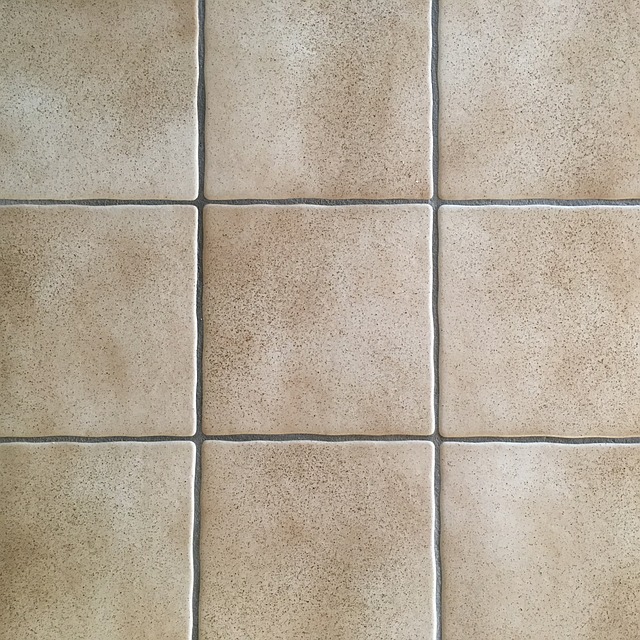
Deep cleaning tiles is a process that requires careful consideration and the right tools for optimal results. Start by gathering all necessary materials, including a high-quality tile cleaner suitable for your tile type, a mop or brush, protective gloves, and a vacuum with a specialized attachment. Begin by vacuuming the floor to remove any loose dirt or debris. Next, apply the tile cleaner according to the manufacturer’s instructions, ensuring even coverage. Let the cleaner sit for a few minutes to allow it to penetrate the grime.
Use your mop or brush to scrub the tiles thoroughly, making sure to reach all corners and edges. For stubborn stains, consider using a soft-bristled toothbrush for a more targeted approach. Rinse the tiles with warm water until no residue remains from the cleaner. Finally, dry the tiles promptly with a clean towel or allow them to air dry to prevent water spots. Regular deep cleaning sessions will help maintain the appearance and longevity of your tiles.
Restoring Grout: A Crucial Part of Tile Cleaning Process
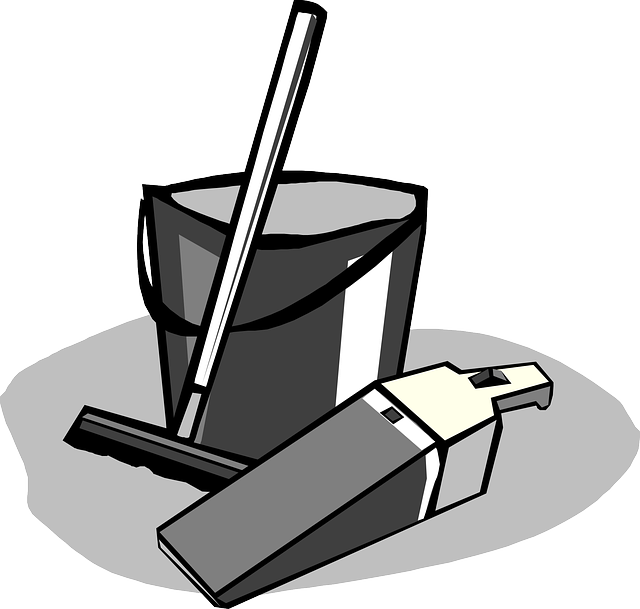
Restoring grout is an integral part of a comprehensive tile cleaning service, as it revitalizes the overall look of your tiled surfaces. Grout, often made from cement or sand, can become discolored over time due to various factors like dirt, moisture, and stains. Professional tile cleaners employ specialized techniques and products to deeply clean and rejuvenate the grout lines, ensuring they match the hue of the tiles perfectly.
This meticulous process involves scrubbing away built-up grime, mold, and mildew using powerful yet safe cleaning solutions. Once the grout is thoroughly cleaned, it’s commonly sealed to prevent future staining and easy maintenance. By focusing on grout restoration, professional tile cleaners not only restore the aesthetic appeal but also protect the durability of your tiled areas, making them stand out in any space, be it a kitchen, bathroom, or entryway.
Tips for Preventing Future Stains and Damage
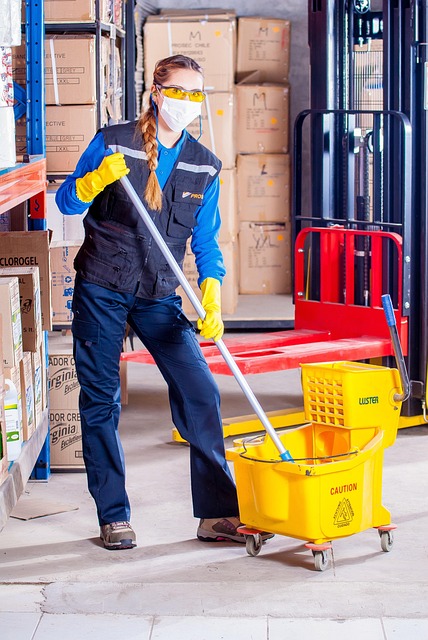
Regular tile cleaning is the first line of defense against future stains and damage. Using a microfiber mop or brush with warm water and a mild, pH-neutral cleaner ensures that dirt and grime are removed effectively without causing any discoloration or erosion. Additionally, sealing your tiles after cleaning can provide an extra layer of protection. Opt for a sealant designed specifically for tiles to prevent liquids from penetrating the surface and causing stains.
To further minimize the risk of staining, be mindful of what you’re pouring onto your tiles. Acids like vinegar or citrus juices can erode tile surfaces over time. Always use trivets or mats under hot dishes to avoid direct contact with tiles. Regularly cleaning high-traffic areas and addressing spills immediately can also help maintain the integrity of your tiles, ensuring they remain in pristine condition for years to come.
Choosing the Right Professional Tile Cleaning Service
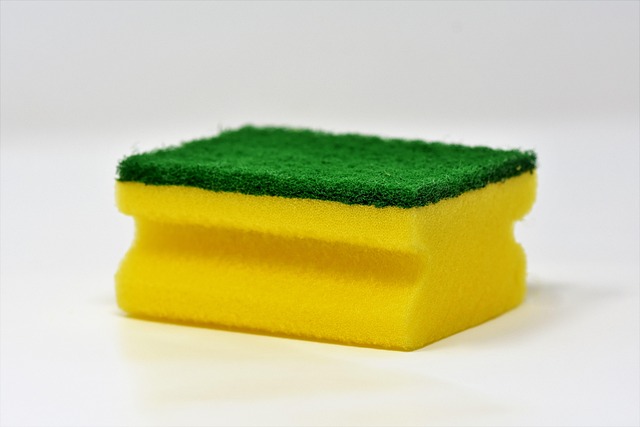
When considering professional tile cleaning services, it’s crucial to do your research and choose a reputable company that offers tailored solutions for your specific needs. Look for professionals who are experienced in dealing with various types of tiles—from ceramic to natural stone—as well as specialized cleaning techniques such as steam cleaning or chemical-free options, depending on the level of dirt and grime present.
Reputation and customer reviews are essential indicators of a quality service. Check online platforms and local directories for feedback from previous clients, which can give you a clear idea of their reliability, efficiency, and the results they deliver. Additionally, ensure the company provides insurance and guarantees to protect both your tiles and your investment in their cleaning services.
